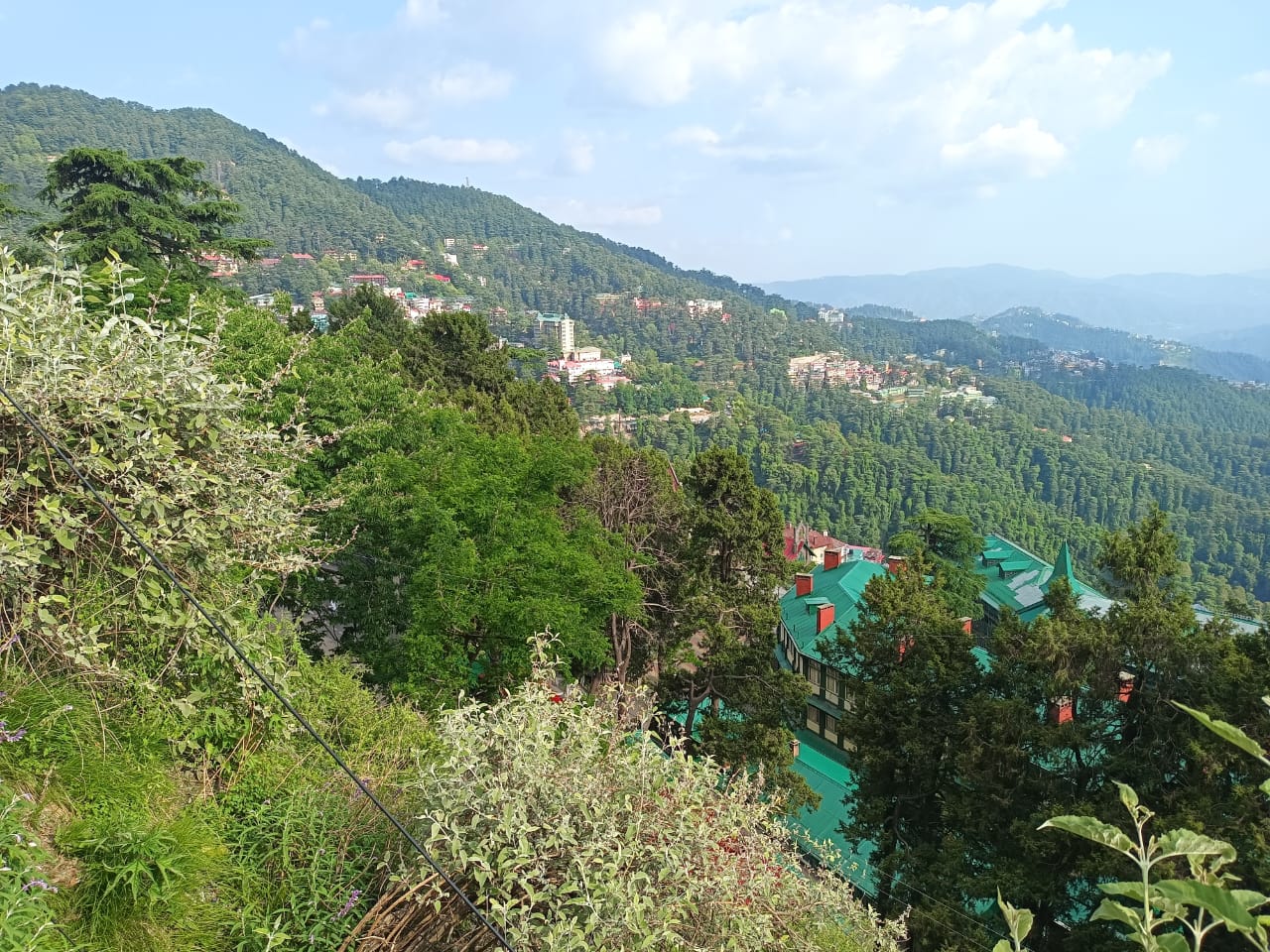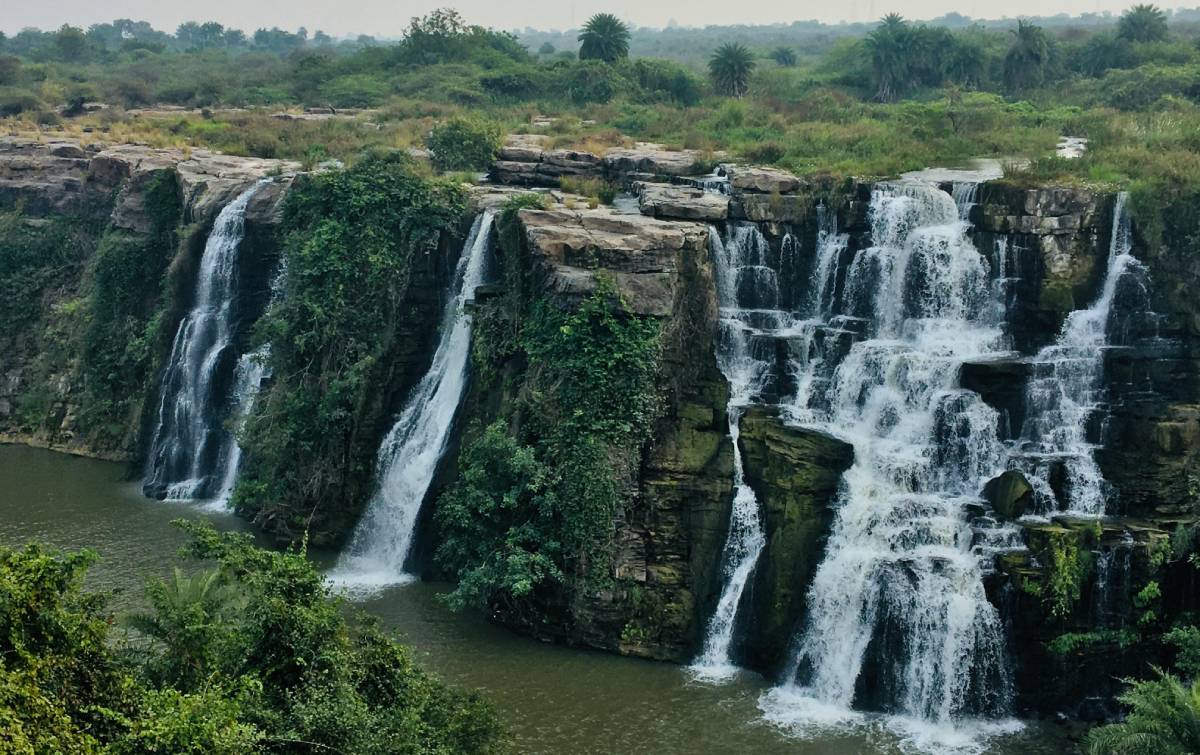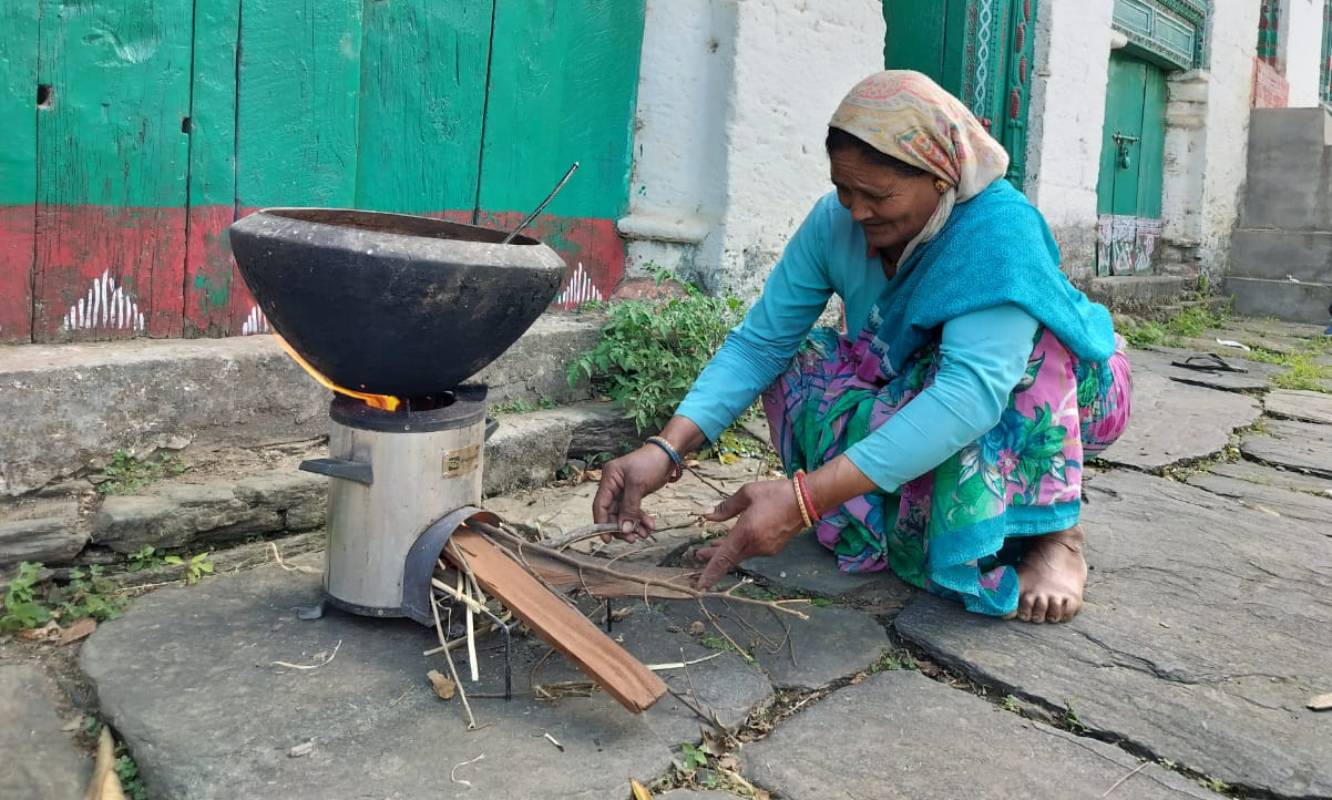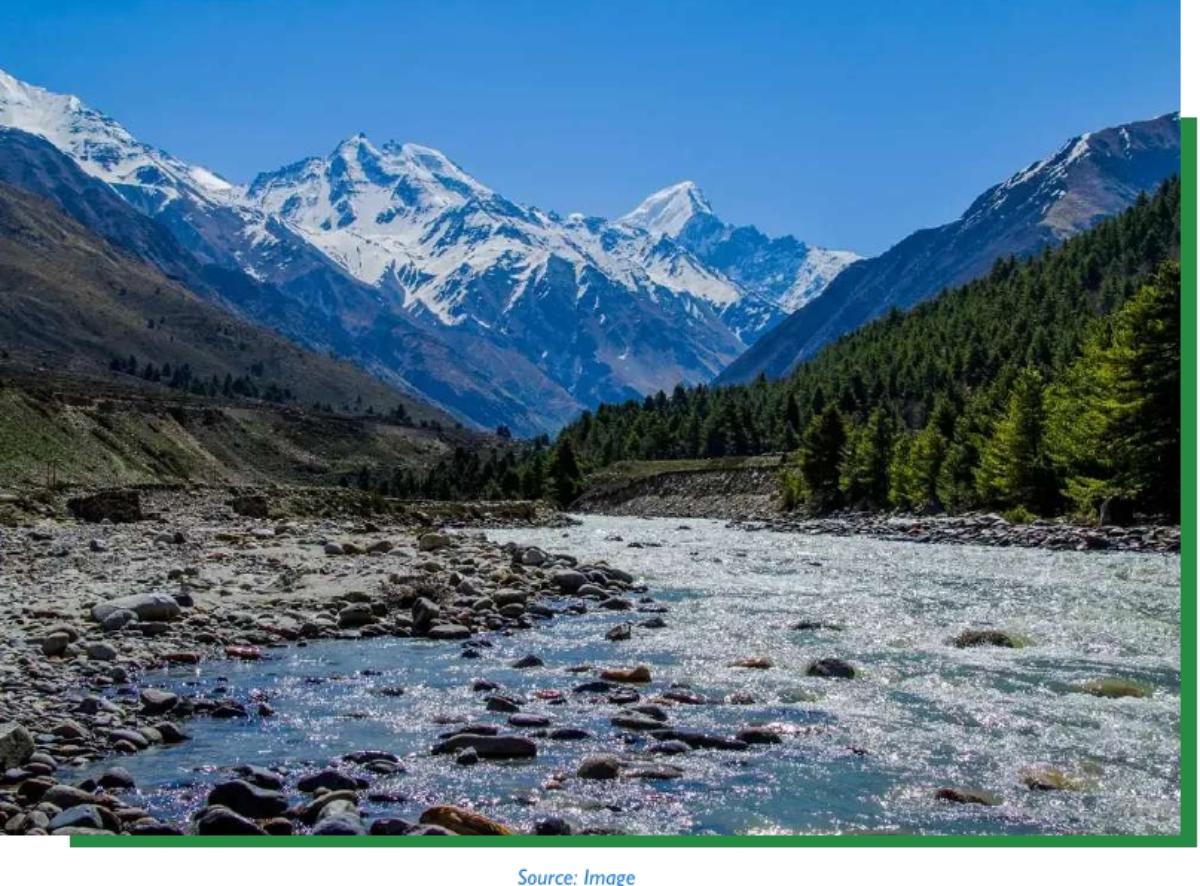Introduction
The institutionalization of forest governance in India started in the late 19th century, when the then colonial British government enacted the Indian Forest Act, 1878. Over the next fifty years, the colonial government attempted to take full control of forest land and its resources using policy instruments like formation of the forest department, land settlement, forest rights settlements, commercialization of forest products, categorization of forests, formation of national parks and protected forests. All these policy instruments disrupted the way people were living in and around forests. Most affected people were forest dwellers, who were dependent on forest and its resources for their lives and livelihoods.
The overall purpose of institutionalization of forest governance by the British government was to commercialize Indian forests and have full control over revenue generated using forests. In many places these policies went against traditional practices of forest dwellers and their customary rights. As a result resentment against British forest governance grew in various parts of the country. Such strong public resentment against forest policies leading to public protest were recorded in many parts of Western Himalayan regions especially in Kumaon, Garhwal (presently in Uttarakhand) and Kangra (presently in Himachal Pradesh). Protests in these areas forced the British forest officials to innovate in forest governance in certain areas by involving community members. Cooperative Forest Societies of Kangra (CFS) and Van Panchayats (VPs) in hilly districts of Uttarakhand are two unique experiments of community forest governance initiated by the colonial government in 1930s and 1940s respectively.
Community forest governance through CFS and VPs went through several changes especially after independence. These changes were triggered by many factors including global environmental conventions, influences of multilateral financial agencies, conflicting incentives of the state forest department and forest dwelling communities and increasing market of forest resources. In the 1990s the government of India rolled out an externally funded project called Joint Forest Management (JFM) with an objective to involve communities in forest management. This project in next 15-20 years opened gates of forest to many genuine deserving forest dwellers. However, the impact of the JFM project on CFS and VPs is way different, as these institutions were already in the hands of community members. This paper is an attempt to understand the impact of JFM on well-established community forest governance institutions- CFS and VPs of western Indian Himalaya.
Cooperative Forest Societies of Kangra
On recommendation of Garbett Commission constituted to explore institutional mechanisms to involve common forest dwellers in forest management, the then Punjab government in 1940 announced Kangra Cooperative Forest Society in Kangra district. The main objective of this scheme was to ensure people’s ownership to arrest soil erosion and conserve forest in the Kangra valley (Oliver, 2001). Moreover, it provided incentives to villagers in the form of access to forest resources such as timber, NTFPs, fuel, fodder, grazing ground, stone, slate and water.
The then Punjab government approved the Cooperative Forest Society scheme for five years but the positive impact of the scheme led to extension of the scheme for yet another five year from 1945 to 1950. By 1953 as many as 72 cooperative forest societies were constituted in different villages of Kangra district (Ahel, 2002). Subsequently two CFS were dissolved by the state government due to administrative irregularities. Currently there are 70 CFS and they cumulatively control 10% (23,500 hectare) of the total forest of Kangra district (Sudha, 2001).
The income of CFSs and grants in aid provided by the state to the cooperatives were always contentious issues, which led to institutional instability of the CFS scheme. Yet till 1971, these cooperatives continued to manage their forest effectively (Ahel, 2001). However, after the formation of Himachal Pradesh as a separate state in 1971, this scheme hit many roadblocks. To review the status of the CFS scheme and work out a future plan various committees were constituted by the Himachal Pradesh government, but none of them resulted in stable institutional mechanisms for cooperative forest societies.
Originally the plan was to share revenue from timber between forest department and CFSs in the ratio of 50:50 and 100 per cent revenue from NTFP was to be owned by the CFSs. However, the revenue from timber, which was always quite high, went to the forest department. The share of CFSs in timber sale used to be transferred by the forest department as grant in aid (Oliver, 2001). Moreover, the release of the grant was further at the whims and fancies of the state forest department. Moreover in 1967 the government of Punjab seized the right of CFSs to sell NTFP and handed it over to a separate corporation. In the 1970s itself the financial autonomy of these cooperative forest societies was taken off.
A study by Oliver (2001) observed that CFSs scheme in the 1950s and 1960s worked well. In these two decades the forest under the control of CFSs flourished along with remarkable progress in sale of timber and non-timber forest products. In 1976 the Chief Conservator of Forest Mr. R D Rawal developed an integrated forest management plan for all CFSs. In his report he observed, “The experiment of Co-operative Forest Societies it is felt has been fairly successful. It will, therefore, be worthwhile if the societies in existence continue to function till the expiry of this report (1982- 83).”
| Cooperative Forest Societies in Kangra | ||
| Tehsil | Number of CFSs | Area (Ha) |
| Kangra | 16 | 8491.2 |
| Palampur | 17 | 2981.8 |
| Dehra | 11 | 4251.7 |
| Nurpur | 26 | 7828.0 |
| Total | 70 | 23556.3 |
Source: Oliver Springate-Baginski (2001)
The Kangra Cooperative Forest Societies scheme envisioned the role of community members in forest management. The state forest department was always a key stakeholder in this scheme as a technical partner to develop management plans in consultation with villagers and share costs and benefits arising from the sale of forest produce. However, historically these institutions remain unstable due to the temporary nature of policy/scheme governing CFSs. However, CFSs enjoyed autonomy till 1971 to manage forest within broad guidelines of the forest management plan approved by the state forest department. The functioning of the CFSs declined after 1971 as their financial and operational autonomy was taken off by the state government.
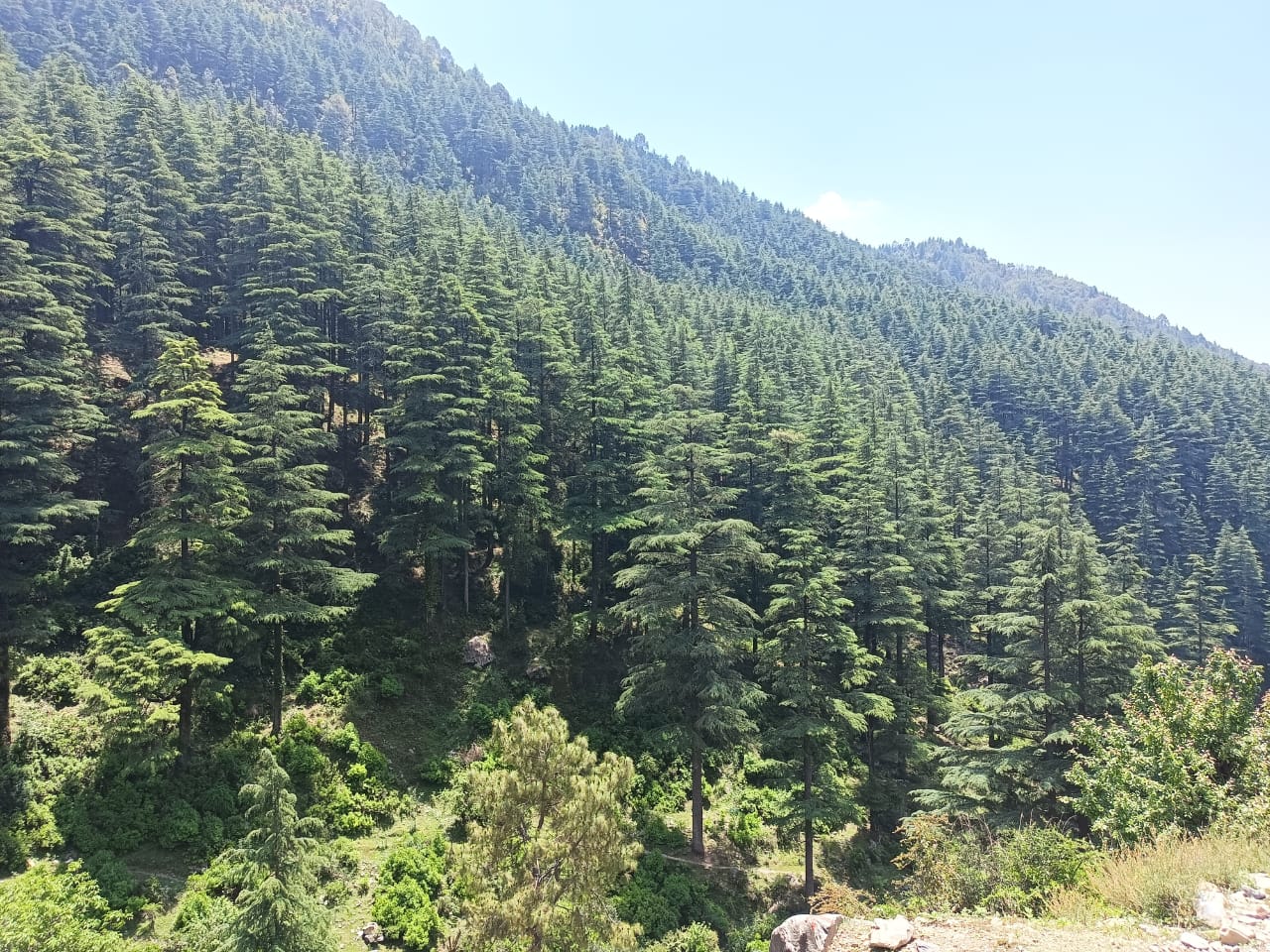
Kangra Cooperative Forest Societies Rules
Main Highlights
Objectives of KFCSs: To arrange for the plantation, improvement, protection and management of society forests as mentioned in the Working Plans, with special reference to preventing erosion and to utilising the forest produce to the best advantage to the members.
Formation of FCSs: A society was formed only when 75% of the land owners and village residents with rights in the forest agreed to the formation of FCS.
Membership: Any resident within the area of a society’s operation who is over 18 years of age can become a member on payment of membership fee.
Managing Committee: The managing committee of FCS consists of not more than seven persons including the president, vice president, treasurer and secretary. Secretary was the main executive of the FCSs.
Source of Income of FCSs: Fees charged for access to forest land and its resources by forest dwellers, plus Income received from private land management by FCSs plus Government Grant. After deducting expenses, this gave the Net Distributable Income.
Utilization of funds of FCSs: From net Distributable income mandatory expenditure are as follows: 1% as reserve fund, 10% forest improvement fund, 9% for charitable purposes and 5% for cooperative education
Forest Working Plan: Preparation of forest working plan by authorized forest officials in consultation with members of FCSs and approved by the general body of the FCSs was a pre-condition of registering FCSs under the cooperative law.
Van Panchayats in Hilly Districts of Uttarakhand
The Van Panchayat system is a unique framework to regulate planning, management and monitoring of common forest for villager’s use in the mountain districts of Uttarakhand. These forests are crucial for the subsistence economy of mountain people in the state. However, local people had to fight against 39 coercive forest policies of the British colonial government in the early twentieth century to win this system of community managed forest. Unlike in many other parts of the country, Britishers were least interested in revenue from agriculture in the mountain. They knew thick and healthy forest in the Western Himalayan agricultural zone can yield more revenue for them compared to agriculture. Therefore they started regulating forests in the region from the early nineteenth century. However, up until the late nineteenth century, these regulations were not directly threatening the life and livelihood of local people. In 1877 the then government demarcated the forest and follow-up regulations from 1893 to 1910 started alienating people from the use of forest and forest products. It instigated local people to revolt against the government and its policies related to the forest and forest products.
The people’s revolt intensified in 1916 and continued up until 1921, when the colonial government decided to constitute a grievance committee to resolve the issue. Based on the recommendations of the grievance committee, the then government agreed to hand over forest in the close proximity of any village to its residents. For the management of such forest the ‘Kumaun Panchayat Forest Rules’ were issued in 1931 under the Article-6 of the Scheduled Districts Act, 1874.
In 1974 the then state government of Uttar Pradesh amended these rules. With the abolition of the Scheduled District Act, 1874 new rules were issued under the Article 28 of the Indian Forest Act, 1927. These rules introduced the forest department as a key regulator along with the revenue department. The article 28 of the Indian Forest Act, 1927 provides for the constitution of ‘Village-forest’ under the supervision of the forest department. The department has the right to withdraw rights and concessions granted to villagers through village forest any time. Therefore, many experts believe that the amendment to the Panchayati forest in 1974 diluted the entire system. However, these Panchayats continued to enjoy rights related to making sub-rules, developing working plans for the forest, distribution of forest products, collection of fee and fine and management of funds.
With the formation of Uttarakhand as 27th state of India, the entire area where the Van Panchayat system was in place came under the Uttarakhand government. With the motive of implementing the Joint Forest Management (JFM) scheme, the then Uttarakhand government brought yet another amendment to the Panchayat forest in 2001. These amendments were opposed and criticized by villagers and activists. Responding to these voices, the first elected government of the newly formed state released a new set of rules of Panchayati forest in 2005.
The Uttaranchal Panchayati Forest Rules, 2005 are currently in force with some changes in 2012. These rules also recognize van panchayat as ‘village forest’ as defined in the section 28 of the Indian Forest Act, 2020. The new rules have reduced the autonomy of these panchayats substantially and confined them as self-help groups (forest users). These rules provide for the development of composite plans by the divisional forest officer. Van Panchayats have to develop micro-plan in accordance with the composite plan developed by the forest department for their forest with the help of grass root forest officials. It has also made the forest guard an ex-officio secretary of the Van Panchayat.
| Van Panchayats in Uttarakhand | ||
| District | No of Van Panchayats | Total Area under Van Panchayats (in Hectare) |
| Chamoli | 1509 | 327047.5 |
| Almora | 2324 | 77693.25 |
| Bageshwar | 822 | 38782.92 |
| Champawat | 654 | 33649.77 |
| Dehradun | 170 | 6571.275 |
| Nainital | 413 | 32992.49 |
| Pauri | 2450 | 55813.57 |
| Pithoragarh | 1621 | 123609.7 |
| Rudrapryag | 509 | 18379.64 |
| Tehri | 1290 | 14164.86 |
| Uttarkashi | 406 | 3983.989 |
| Total | 12168 | 732688.9 |
Source: Department of Forest, Govt of Uttarakhand
The Van Panchayat system in its history of around 90 years has seen many changes. Policy level changes do have bearing on the performance of Panchayats and productivity of the forest. I have not come across any study comparing all policy changes in the Van Panchayat system and their impact on the ground. However, it is clear that over the years, the Van Panchayat system lost its autonomy along with loss for forest productivity.
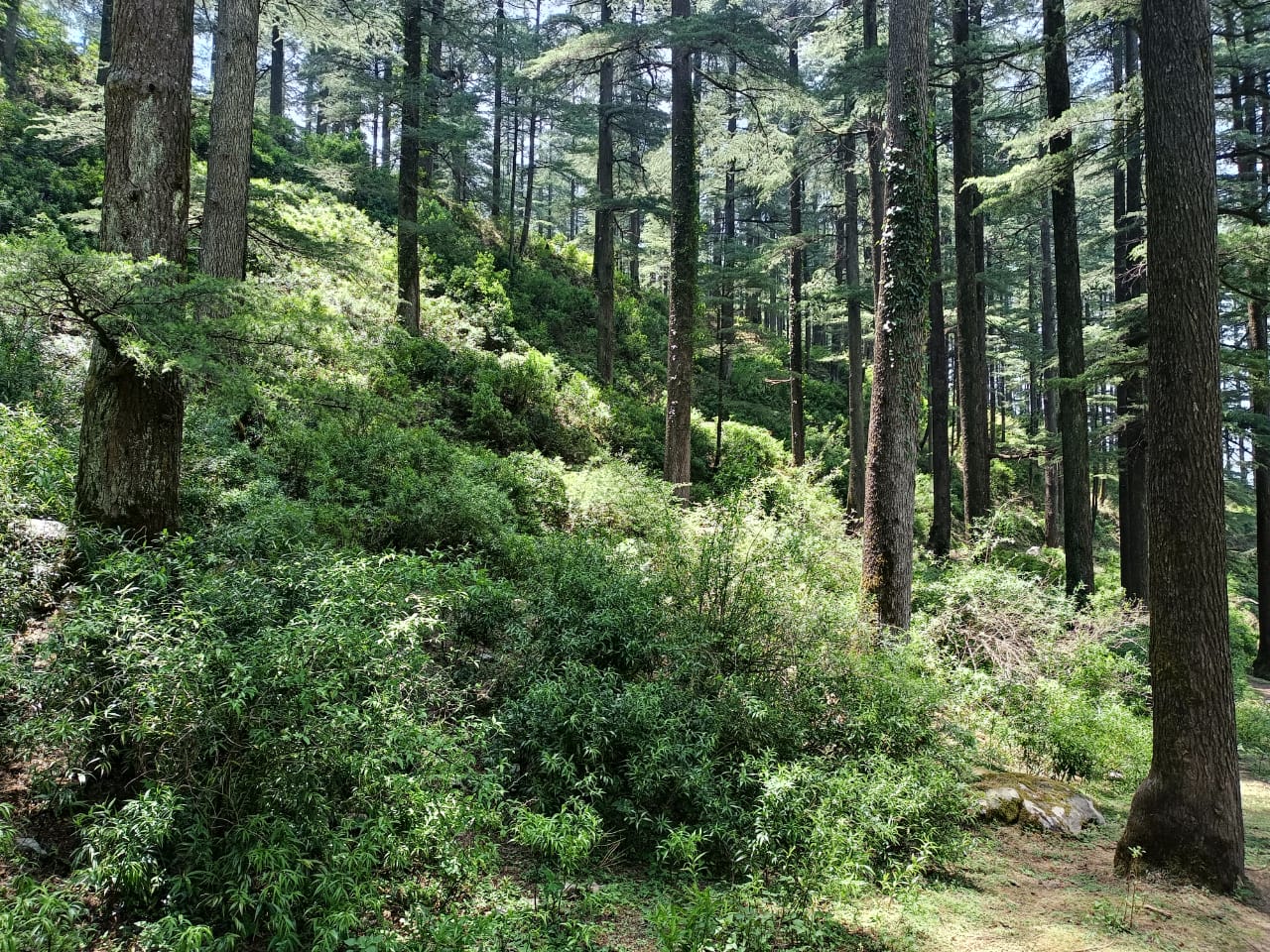
Uttaranchal Panchayati Forest Rules, 2005
Main highlights
Legal status: Rules issued under the sub-section 2 of the section 28 (read with section 76) of the Indian Forest Act, 1927.
Duties of Users:
- Provide help in forest fire control in case of incidence of forest fire in the concerned village forest.
- In case of any forest offence such as encroachment, illicit grazing or illicit felling, its intimation shall be immediately given to the Management Committee.
- Provide support for protection of old plantations established earlier or plantations carried out by the Management Committee
Composition of management committee of Van Panchayat:
- The management committee of VP shall consist of nine members. Four seats shall be reserved for women out of whom one shall be from scheduled caste or scheduled tribe. One seat out of the remaining five seats shall be reserved for the male members of the scheduled castes or the scheduled tribes. The post of Sarpanch (head of VP) will be held by men and women on rotational basis
Role of the Forest Department:
- To Prepare Composite Management Plan for all van panchayats
- To help VPs to prepare micro plan and approve the same –
- To help VPs to prepare annual implementation plan and approve the same
- The local forest guard serves as secretary of management committee of VP.
- Manage distribution of forest produce amongst the users and regulate its sale.
- Regulate and approve sub-rules framed by van panchayats.
Management Plan for Van Panchayats:
- The divisional forest officer shall prepare a Composite Management Plan for all the village forests/ panchayat forests within his/her control for a period of five years. The plan will be approved by the conservator of forests.
- It is obligatory on the part of Van Panchayat to prepare a micro plan on the basis of guiding principles given in the composite management plan approved by the conservator of forests. The micro plan will be prepared with the assistance of concerned deputy ranger/forester or forest guard. The micro plan will be finally approved by the sub-divisional forest officer.
- Based on the micro plan the van panchayat will prepare annual implementation plan, which will be finally approved by the forest range officer.
Exploitation and Utilisation of Forest Produce:
- No forest produce shall be exploited unless the ecological requirements of the area are ensured by village forest/panchayat forest.
- All customary rights of the holders such as collection of fallen fuelwood, lopping of branches of trees, cutting of grass shall continue to be governed under the provisions of micro plan.
- After fulfilling the above mentioned two requirements, forest produces may be disposed on prior permission from divisional forest officer for the bonafide domestic use of right holders or the local cottage industries or the village industries or for the work of public utility
- After fulfilling above three requirements on the approval of forest range officer and direction of divisional forest officer can dispose forest products for commercial sale.
Impact of JFM on Time Tested CFSs and Van Panchayats
In accordance with the National Forest Policy, 1988 the government of India issued notification for the Joint Forest Management scheme in 1990 to share management responsibility with local communities. The original intention of this scheme was to involve local community members in regeneration of degraded forest around villages and support their forest based livelihoods. The rationale of the Joint forest Management (JFM) was to enhance collaboration between officials of state forest department and villagers and thereby share the onus of protection and management of degraded forest.
The JFM scheme was further amended in 2000 by issuance of an updated guideline by the central government. These guidelines attempted to give a solid legal backing to Joint Forest Management Committees (JFMCs) constituted at the village level for the management of forest. It provided for registration of all JFMC under the Society Registration Act, 1860. All village adults can become members of JFMC and they elect an executive committee of president, vice-president, joint secretary, treasurer and a few members. The committee also has provision of some ex-officio members such as officials of forest department and NGO representatives. The guideline provides for appointment of forest officials as member secretary of all JFMCs. The main tasks of the JFMCs include forest protection, forest conservation and sale of non-timber forest products. The income of the JFMCs is further shared by the state forest department and JFMC. This guideline further provided for 50% reservation for women in general membership and 33% reservation in the executive committee of JFMC.
In the updated JFM guideline of year 2000, the provision of developing a micro plan for all JFMCs was an attempt to modernize forest governance and bring scientific approach in forest conservation, protection and harvesting. The officials of the forest department have the responsibility of preparing a micro plan for JFMC in consultation with villagers. However, the micro plan has to be approved by the designated senior forest official before its adoption by the general body of a JFMC.
The government of India further updated the guidelines of JFM in 2002. This guideline tried to further fine tune its previous guidelines by providing for a formal memorandum of understanding (MoU) between the state forest department and JFMC. This guideline also stresses on issues pertinent to collection and sale of NTFPs and capacity development for sustainable harvesting. According to the data of the Ministry of Environment, Forest and Climate Change (MoEFCC) there are 1,18,000 JMCs across the country managing 22 million hectare of degraded forest. The ministry further claims that the JFM has helped in stabilizing and increasing the forest and tree cover in India[1].
Difference between JFM and previous Community Forest Management Schemes
The Van Panchayat system in Uttarakhand is the oldest formally institutionalized community forest governance mechanism in the Western Indian Himalayan region. It started in 1931 in Kumaun region of Uttarakhand and expanded to the British ruled hilly region of present Uttarakhand. Following the provisions of the Van Panchayat, the British government on demand of people started the Cooperative Forest Society scheme in Kangra district of then Punjab province in 1940. In comparison to Van Panchayats the CFSs scheme has always been a temporary arrangement under the aegis of the state forest department. However, in terms of the principle of community forest governance both of these institutions shares a common foundation.
The idea of Van Panchayat system in Uttarakhand and CFSs scheme in Himachal Pradesh was to believe in traditional knowledge, skills, practices and governing skills of local villagers in maximising both social and ecological benefits of forests. In initial phases both of these institutions had significant organizational autonomy to take decisions, resolve grievances, distribute forest resources and develop management plans. Moreover, these institutions were also enjoying functional and financial autonomy to recruit required staff for forest conservation/protection and manage funds as per requirement of the forest and local communities.
The incentive of villagers both in Uttarakhand and Kangra district of Himachal Pradesh as governance stakeholders of Van Panchayats and CFSs has been to promote their livelihoods such as agriculture and livestock. For both of these occupations, villagers are heavily dependent on forests. Moreover, villagers are strongly connected with their forest for other bonafide use of forest products and cultural engagements. This complex web of incentives has always motivated villagers to protect and conserve their forest through Van Panchayats[2] and CFSs[3]. Maximisation of co-benefits by Van Panchayats and CFSs was acknowledged by a number of assessments carried out by forest departments of respective states.
The founding principle of the Joint Forest Management program is significantly different from Van Panchayats and CFSs. The JFM program does not fully believe in the skills and capability of forest dwellers. Therefore it constitutes JFMC under strict guidelines prescribing dos and don’ts. Moreover, it empowers the state forest department to fully control and influence decisions of JFMC by having their officer as member secretary in each JFMC. The JFM has introduced the idea of a micro plan for the management of community forest, which is a progressive step. However, it is the state forest department which prepares and approves it. The general body of JFMC has no right to change the micro plan of their forest without approval of a designated senior forest officer. Overall the JFM delegates some of its responsibility and puts the onus of forest protection and conservation on local communities. However, the original idea of Van Panchayat and CFS was to delegate full autonomy to forest dwellers to govern their forest.

Impact of JFM on Autonomous Community Forest Governance
Before JFM, examples of formal community led forest management were limited and scattered. Prominent among them are Van Panchayat in Uttarakhand, Cooperative Forest Samiti in Kangra and village forest constituted in different parts of the country under the Indian Forest Act, 1927. A training handbook for JFM developed by the Ministry of Environment, Forest and Climate Change (MoEFCC) acknowledges these pre-existing systems of community forest governance. However, this manual encourages JFM officials to have dialogue with such institutions and build consensus for their integration with the JFM[4].
The JFM project was implemented across the country and its implementation was further supported by multilateral financial institutions. The strong central policy push and interest of multilateral institutions led to state level adoption of JFM. In this process, some states aligned their existing system of community forest governance with the guidelines of the JFM. The aligning of existing institutions with the JFM in many states diluted time tested decentralized forest governance. In western Indian Himalayan region Van Panchayats of Uttarakhand lost their organizational, functional and financial autonomy.
In order to align the nearly 70 year’s old van panchayat system with the newly developed JFM, the government of Uttarakhand changed its Van Panchayat rules in 2001. These rules were well within the framework of JFM. Further in order to incorporate updated JFM guidelines of 2002, the state government further made changes in its van panchayat rules in 2005. Overall, the state government reduced autonomous van panchayats to JFMC. However, it continued to call it Van Panchayat instead of JFMC.
The updated Van Panchayat rules in Uttarakhand in order to align this institution with JFM introduce the state forest department as regulator as well as key beneficiary of forest resources. It provides for a forest official as member secretary of Van Panchayat and micro plan of the Van Panchayat to be prepared and approved by the state forest department. Insertion of such provisions in the Van Panchayat governance took away their freedom to decision making, forest conservation and protection. It has also taken away the freedom of Van Panchayat to distribute forest resources on its own. While the functioning of Van Panchayat is fully in control of the forest department, the onus of protection of forest and accountability remains with villagers and Van Panchayat.
Ecological and Social Outcomes of JFM in Uttarakhand
The Joint Forest Management program has been implemented in the name of Van Panchayat in Uttarakhand since 2001. Large numbers of Van Panchayat were constituted in the state after the roll out of JFM in the state. There are a number of studies which show that till 1991 van panchayat forests were in much better condition compared to nearby reserve forests (Agrawal and Yamada, 1997; Agrawal and Ostrom, 2001; Somanathan, 1997; Ballabh and Singh, 1988). The website of MoEFCC claims that the JFM has helped in stabilizing and increasing forest in India[5]. This section of the paper is an attempt to use official data to see patterns of changes in selected ecological and social outcomes especially after 2001.
State of Forests in Uttarakhand
Nearly 70 per cent of the state’s geographical area is categorized as forest. Of this nearly 13% forest is under the control of 12,000 van Panchayats. These Van Panchayats are only in hilly districts of Uttarakhand. The hill district of Uttarakhand includes Chamoli, Rudrapryag, Tehri, Pauri Garhwal, Uttarkashi, Champawat, Pithoragarh, Almora, Nainital and Bageshwar.
|
Comparison of Forest Cover Hill Districts- Uttarakhand (Figures in sq.km.) |
|||
| 2001 | 2021 | Difference | |
| Dense Forest | 14213 | 13384 | -829 |
| Open Forest | 3750 | 5253 | 1503 |
| Total Forest | 17963 | 18637 | 674 |
| Scrub | 513 | 283 | -230 |
Source: Forest Survey of India, ISFR, 2001 and ISFR, 2021
A comparison of India State of Forest Report for 2001 and 2021, data shows that the forest cover has increased by 674 sq km in these two decades. The ISFR report attributes this positive change to plantation activities in the state. However, the data also suggests that the quality of forest has degraded significantly in these 20 years. It shows that the dense forest (high dense forest and moderate dense forest) has decreased from 14,213 sq km in 2001 to 13,384 sq km in 2021. In other words 829 sq km dense forest of the state has degraded to open forest.
Forest Fires
Forest fires in Uttarakhand are a serious environmental issue. It destroys thousands of hectares of forests every year. The forest department of Uttarakhand has identified four major reasons for forest fire- deliberate attempt to set fire, agriculture related, accidental or carelessness of people and natural reasons because of increase in temperature[6].
|
Uttarakhand Forest Fire Incidents |
|
| Year Range | Number of Fire Incidents |
| 2006-2010 | 859 |
| 2011-15 | 1,982 |
| 2016-2020 | 18,246 |
| 2021-2024 (May 15, 2024) | 36,391 |
Source: Compiled from FSI: https://fsiforestfire.gov.in/index.php
Numbers of incidents of forest fires have exponentially grown in the last two decades. The data of forest fire managed by the Forest Survey of India (FSI) reveals that during 2006 to 2010 only 859 incidents of forest fire were recorded, which has increased to 36,391 incidents during 2021-2024. The forest fire management plan of Uttarakhand government reveals that the total affected forest area in 2011 was 231 hectare which has increased to 3,553 hectare in 2021.

Fodder and Grazing Dependency
Livestock is one of the main occupations of people in the mountain district of Uttarakhand. They normally keep cattle, Buffalo, Sheep and goats. Very few people also have horses and mules. According to the Livestock census in 2003, the total livestock population in hilly districts of Uttarakhand was 33.48 lakh. Sixteen year later the census conducted in 2019 counted 28.45 lakh livestock in these 9 hilly districts of the state. In other words the livestock population in the hills of Uttarakhand had decreased by more than 15% during 2003 and 2009.
|
Livestock |
Livestock Census
Hilly Districts of Uttarakhand |
Fodder Requirement (MT per Year) Hilly Districts of Uttarakhand |
||||
| 2003 | 2019 | Difference | 2003 | 2019 | Difference | |
| Cattle | 15,77,672 | 11,35,830 | -4,41,842 | 37,07,529 | 26,69,201 | -10,38,329 |
| Buffalo | 5,88,963 | 3,68,983 | -2,19,980 | 20,76,095 | 13,00,665 | -7,75,430 |
| Sheep | 2,69,064 | 2,70,800 | 1,736 | 1,26,460 | 1,27,276 | 816 |
| Goat | 9,12,539 | 10,69,836 | 1,57,297 | 4,28,893 | 5,02,823 | 73,930 |
| Total | 33,48,238 | 28,45,449 | -5,02,789 | 63,38,977 | 45,99,964 | -17,39,013 |
Source: Directorate of Animal Husbandry, GoI
Using the formula to calculate fodder consumption by various types of livestock, we observed that the fodder consumption in 2003 was 63.38 lakh MT which had decreased to 45.99 lakh MT in 2019. The decrease in livestock population is directly proportional to decrease in fodder consumption. Further, it can be concluded that people’s dependency on livestock for occupation has decreased significantly. And therefore their dependency on forest for fodder and grazing has also decreased.
Firewood Dependency
The 54th round of National Sample Survey (NSS) on Common Property Resources in India released in 1998-99 had observed that 87 percent households in hilly region of Uttarakhand were collecting firewood from forest (NSSO, 1999). We don’t have any such updated comprehensive survey on fuel wood collocation to compare. However, the National Family and Health Survey (NFHS) has been recording data of households using clean fuel which includes LPG, electricity and other non-wood, non-coal cooking fuel.
|
Household (in %) using Clean Cooking Fuel (Hilly districts of Uttarakhand) |
|||
| District | 2002-04 | 2019-21 | Difference |
| Almora | 38 | 36 | -2 |
| Bageshwar | 33 | 35 | 2 |
| Chamoli | 31 | 37 | 6 |
| Champawat | 24 | 40 | 16 |
| Pauri | 36 | 48 | 12 |
| Pithoragarh | 48 | 46 | -2 |
| Rudrapryag | 33 | 35 | 2 |
| Tehri | 34 | 35 | 1 |
| Uttarkashi | 19 | 33 | 14 |
| Average | 32.88 | 38.33 | 5.45 |
Source: DLHS, 2002-04 and NFHS, 2019-21
The fuel wood dependency for cooking in hilly districts of Uttarakhand is still very high. According to the DLHS-2 and NFHS-5 data the use of clean fuel for cooking in hilly districts of the state has marginally increased from 32.88 per cent in 2002-04 to 38.33% in 2019-21. According to these surveys, during this period only 5.45 people switched from firewood to clean fuel. Though the dependency on firewood is still high, it has decreased in the last few decades.
Climate Induced Distress Migration
People in the mountains are moving out of their traditional occupations. The livestock census discussed above in this paper reveals that now less people are dependent on livestock for their livelihood. The data presented in the table below also suggest that nearly 11 percent of people who migrated from hilly districts of the state migrated because of failure of their traditional occupation- agriculture. Moreover, 48.43 percent of people who have migrated from hills are in search of livelihoods. The high rate of outmigration for livelihoods has eventually decreased people’s dependency on forests and its resources.
| District wise main reasons for migration from gram panchayats (in%) | ||||||
| District | In search of livelihood/ employ-ment | Lack of basic infrastructure | Decline in agriculture productivity | Wildlife destroying agriculture | Problem related to Health and education services | Other |
| Rudraprayag | 52.9 | 4.43 | 4.27 | 5.11 | 24.31 | 8.96 |
| Tehri | 52.43 | 3.07 | 6.17 | 4.26 | 26.08 | 7.97 |
| Uttarkashi | 41.77 | 2.29 | 7.14 | 4.04 | 23.48 | 21.27 |
| Chamoli | 49.3 | 4.93 | 4.73 | 3.09 | 30.56 | 7.38 |
| Pauri | 52.58 | 3.03 | 5.35 | 6.27 | 27.04 | 5.74 |
| Champawat | 54.9 | 5.46 | 6.31 | 6.65 | 16.91 | 9.76 |
| Pithoragarh | 42.81 | 4.97 | 4.66 | 4.08 | 29.65 | 13.84 |
| Almora | 47.78 | 3.81 | 8.37 | 10.99 | 20.36 | 8.7 |
| Bageshwar | 41.39 | 4.32 | 2.18 | 3.42 | 23.58 | 25.1 |
| Average | 48.43 | 4.03 | 5.46 | 5.32 | 24.66 | 12.08 |
Source: Department of Rural Development, Palayan Aayog, Govt of Uttarakhand
The Palayan Aayog constituted by the government of Uttarakhand in its survey observed that more than 48 percent people who migrated out from hilly district are in search of livelihoods. Moreover about 11 percent migrants can be directly attributed to factors related to climate change. 5.46 percent migrants acknowledged that their agricultural productivity in hills has gone down and 5.32 per cent migrants attribute their outmigration to wild animal destroying agriculture. Various reports suggest that degradation of forest resulting in unexpected movements of wildlife in and around human settlement leading to human-wildlife conflicts.
Conclusion
The idea of Joint Forest Management (JFM) is to integrate community members in forest conservation, promote their livelihoods and share the onus of forest protection. It has created an institutional mechanism for participatory forest management. The JFM committee at village level provides space for ordinary forest dwellers to participate in local level decision making. Further the federations of JFMCs provide a marketing network for sale of NTFPs collected by forest dwellers. However the state forest department still controls environmental governance of JFMCs and their federations through strict JFM guidelines and micro plans to regulate day to day governance transactions of JFMCs.
While the JFM has opened gates of forest to many forest dwellers, it has adversely affected relatively more democratic and autonomous community forest governance institutions namely Kangra Cooperative Forest Societies and Van Panchayats in the Western Indian Himalayan Region. State governments of Uttarakhand and Himachal Pradesh had decided to align their existing community forest governance institution with JFM. This decision proved to be counterproductive for both of these time tested successful institutions. The JFM has taken away the organizational, functional and financial autonomy of Van Panchayats in Uttarakhand.
This paper has analyzed changes in selected social and ecological outcomes of environmental governance in Uttarakhand after alignment of Van Panchayat with JFM in 2001. It observed that the biotic interference of local community members in forest has decreased. More precisely the demand for fodder, fuel and other livelihood support has decreased in the last more than two decades. Minimizing biotic interference is the goal of conventional forest regeneration approaches. Therefore, as per the conventional approach, the decreased biotic interference in forests of Uttarakhand would have improved the condition of forest in the state. However, data shows that in the last two decades we lost over 800 sq km of good dense forest in the state. Moreover, the incidents of forest fire have been increasing exponentially.
JFM has centralized the governance of the time tested Van Panchayat system in Uttarakhand in the name of participatory forest governance. Such extreme changes in governance of Van Panchayats and CFSs have adversely affected various social and ecological outcomes.
References
- NSSO, 1999, Common Property Resources in India NSS 54th Round January 1998 – June 1998, National Sample Survey Organisation Department of Statistics and Programme Implementation Government of India December 1999 Report No. 452(54/31/4)
- Agrawal A. and Ostrom E., 2001, ‘Collective Action, Property Rights, and Decentralization in Resource Use in India and Nepal’, POLITICS & SOCIETY, Vol. 29 No. 4, December 2001 485-514, Sage Publication
- Agrawal Arun and Gautam N. Yadama, 1997, ‘How do Local Institutions Mediate Market and Population Pressures on Resources? Forest Panchayats in Kumaon, India’, Blackwell Publishers Ltd, Development and Change Vol. 28 (1997), 435±465. #Institute of Social Studies 1997.
- Ballabh Vishwa and Katar Singh, 1988, ’VAN (Forest) Panchayats in Uttar Pradesh hills: A critical Analysis’, Institute of Rural Management, Anand, December 1988
- Somanathan E., 1991, ‘Deforestation, Property Rights and Incentives in Central Himalaya’, Economic and Political Weekly , Jan. 26, 1991, Vol. 26, No. 4 (Jan. 26, 1991)
- Springate-Baginski, Oliver. 2001. ‘A Boat that Cannot Reach Either Bank’: Lessons from a Long-Term Analysis of the Cooper Analysis of the Cooperative Forest Societies of Kangra District, Himachal Pradesh, India. HIMALAYA 21(2).
- Ahel Rajeev, 2002, The politics of cooperative forest management- the Kangra experience, Himachal Pradesh, ICIMOD, Nepal
- Vasan, Sudha. 2001. Community Forestry: Historical Legacy of Himachal Pradesh. HIMALAYA 21(2). Available at: https:/ https://digitalcommons.macalester /digitalcommons.macalester.edu/himala .edu/himalaya/vol21/iss2/8 ol21/iss2/8
End Notes:
[1] [1] https://moef.gov.in/moef/wildlife-wl/forest-3/index.html#:~:text=Most%20of%20the%20State%20Forest,of%20hectares%20of%20degraded%20forestlands
[2] Agrawal Arun and Gautam N. Yadama, 1997, ‘How do Local Institutions Mediate Market and Population Pressures on Resources? Forest Panchayats in Kumaon, India’, Blackwell Publishers Ltd, Development and Change Vol. 28 (1997), 435±465. #Institute of Social Studies 1997.
[3] Springate-Baginski, Oliver. 2001. ‘A Boat that Cannot Reach Either Bank’: Lessons from a Long-Term Analysis of the Cooper Analysis of the Cooperative Forest Societies of Kangra District, Himachal Pradesh, India. HIMALAYA 21(2).
[4] Joint Forest Management A Handbook For Front Line Staff of Forest Department & JFMC members, https://ifs.nic.in/Dynamic/pdf/JFM%20handbook.pdf
[5] https://moef.gov.in/moef/wildlife-wl/forest-3/index.html#:~:text=Most%20of%20the%20State%20Forest,of%20hectares%20of%20degraded%20forestlands
[6] [1] GoUK, 2022, Rajya Stariya Vanagani Prabandhan Yojana, Department of Forest, Govt. of Uttarakhand.

